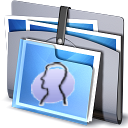
If you think Macs don't get malware, you are sadly mistaken. There are plenty of free antivirus software on the Internet, so please find and download the security on your Mac computer as soon as possible. If you or your kids download music on a regular basis from nefarious sources, you are prime for infection. Or, if you do not have your own personal home network, you are leaving yourself wide open by connecting to open Internet connections in your neighborhood. Beware of network names like linksys or hpsetup. If there is no lock symbol beside the network name, that tells you it is an open network and anyone can connect to the network.
 |
| Daisy |
| Danny |
Lisa complained about a problem with her Macbook cursor jumping around, moving involuntarily, and windows randomly opening. I asked if she had antivirus installed on her computer, "No, I never installed one on the Mac". It goes without saying Lisa, along with everyone else I know, thought MacBooks immune from virus problems.









